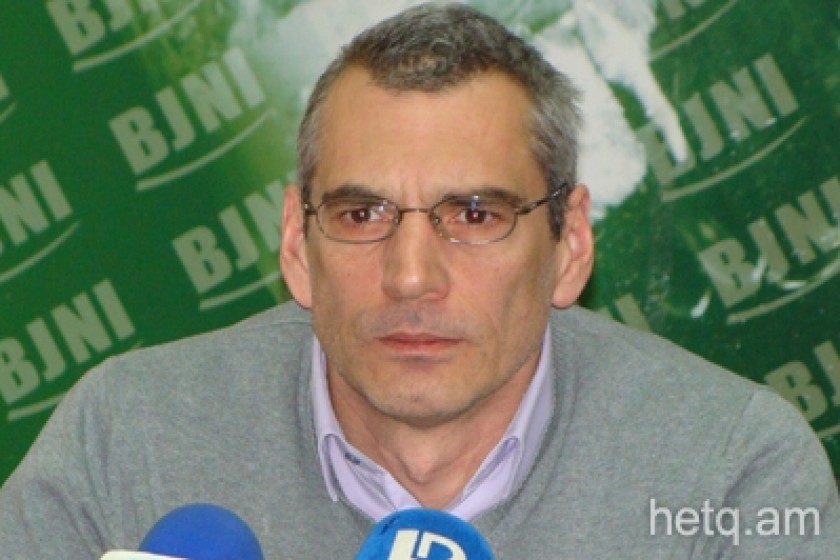
Reassessing Armenian Independence
Twenty years on, oligarchs control economy and have moved into politics
By Richard Giragosian
Looking back at the past 20 years of independence and state-building in Armenia, it’s apparent that forging statehood and securing our sovereignty hasn’t been easy. As a small, landlocked country with few natural resources, Armenia has been hostage to both geography and geopolitics.
Throughout its history, Armenia has undergone alternating periods of isolation and strategic significance, as a central part of a region that has been an arena for competition for much larger, more powerful regional powers like the Persian, Russian and Turkish empires.
The country’s modern history has also been marked by the same vulnerability. Armenia’s brief period of independence from 1918 to 1920 was quickly overtaken by its force incorporation into the Soviet Union.
After subjugation within the union for seven decades, the abrupt collapse of the Soviet system left Armenia neither prepared nor predisposed to take on independence. Unlike the Baltic states, for example, the reassertion of Armenian nationalism was expressed within the context of the Soviet system, rather than in direct confrontation with Moscow. Even the eruption of the Nagorny Karabakh conflict, which antedated the collapse of the Soviet Union, was driven by a strategy of conformity based on the Soviet constitution.
But with the sudden demise of the Soviet Union, Armenia found itself facing the immediate challenges of independence. The infant state also faced a grave and urgent threat to its survival, as the conflict over Nagorny Karabakh grew into outright war with neighbouring Azerbaijan, triggering a virtual blockade of trade, transport and energy by Azerbaijan and Turkey.
In addition, Armenia was still struggling to cope with the devastation caused by the powerful earthquake of 1988.
For Armenia, the early phase of independence was marred by war, economic collapse and blockade, manifested as severe shortages of food, electricity and fuel. These crises thwarted early attempts to build democratic institutions and relegated political reform to second place, after the Nagorny Karabakh conflict. The ongoing state of war also shaped the political trajectory, as a new vibrant nationalism dominated the political discourse in Armenia.
That first decade of independence was marked by two trends in politics. First, the shift in discourse and debate from moderation to militancy; and a second related factor, the transformation of the political elite, as incomers from Nagorny Karabakh gained power and won top positions in the leadership, eventually including the presidency.
These conditions also predetermined the longer-term development of the economic system, and had a seriously distorting effect on the reform process. The combination of a great scarcity of goods, the powerful trade and transport blockade, and the severe disruption of the energy infrastructure all led to the Armenian economy became increasingly closed. Commodity-based cartels were effective in eliminating competitors and came to dominate imports and exports of key materials and foodstuffs.
The emergence of these cartels was initially a consequence of the “conflict economics” of the Nagorny Karabakh war, as they bolstered the generally feeble state. The government was largely preoccupied with economic measures in other areas, ranging from sweeping land reforms to the introduction of a stable national currency.
The power of these cartels quickly expanded beyond commodities. And as in most other post-Soviet states, they used their links with the state to acquire inordinate wealth and assets during the privatisation process. At the same time, they further consolidated their power by positioning themselves at the top of rapidly developing networks of patronage and corruption within the state system.
Over time, the cartels adopted more sophisticated means of expanding their power, including collusion to fix and enforce commodity prices, to prevent competitors from emerging, and to secure exclusive procurement contracts from state institutions.
The birth of this closed, controlled economic system replaced the Soviet system of centralised planning and distribution. Although initially fostered by the economics of the early phase of the conflict, the cartels’ subsequent entrenchment and consolidation of power created a new commercial elite, the oligarchs. The Soviet centralised command economy had been effectively supplanted by a different system in which an oligarchic elite controlled the economy.
Against the backdrop of generally weak state institutions and a pronounced lack of political will, the rise of the oligarchs can be seen as one of the most devastating developments in the two decades Armenia has been independent. The oligarchic system has a devastating impact, eroding the power and authority of the state, which can neither tax the oligarchs nor police their business interests. The state faces an uphill battle if it is to regain control of the economic system.
The entry of many powerful oligarchs into the political system poses more problems. It is most apparent from the pressure they can bring to bear as parliamentarians, able to influence and impede reforms from the inside. Their direct role within national politics also highlights the risks posed by cosy relationships between business and politics.
Against this backdrop, Armenia appears to face further threats. The cumulative effect of two decades of independence has been to create greater dependence, with many missed opportunities.
The challenges are daunting. On top of an apparent lack of political will and visionary leadership that could confront the oligarchs, the state remains hamstrung by inadequate regulation, by inefficient, poor tax collection, and by the underlying weak and arbitrary exercise of the rule of law.
The future of Armenian independence over the coming 20 years looks far from certain. The only realistic assessment one can make is that Armenia faces a truly significant test of its statehood.
23 December 2011
Richard Giragosian is the director of the Regional Studies Centre, an independent think tank in Yerevan, Armenia.
CRS Issue 623 (www.iwpr.net)
 Videos
Videos Photos
Photos




Comments (3)
Write a comment